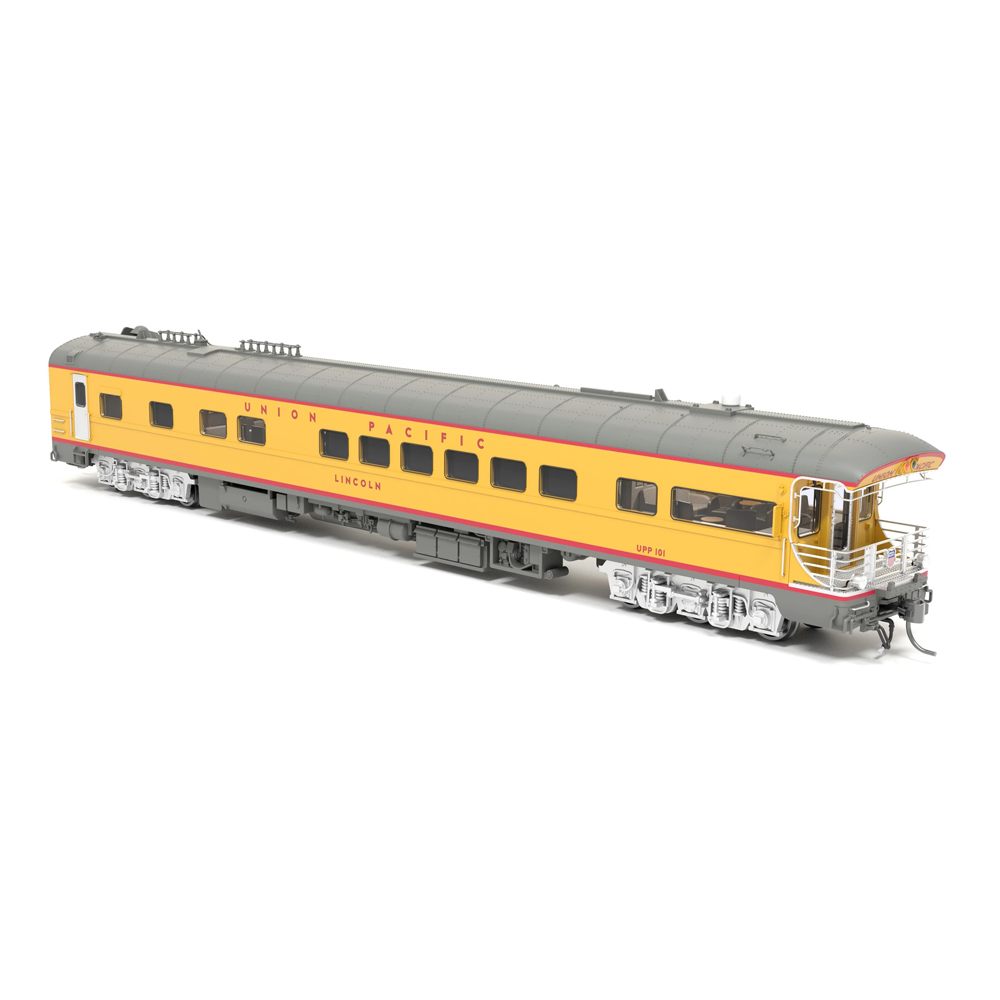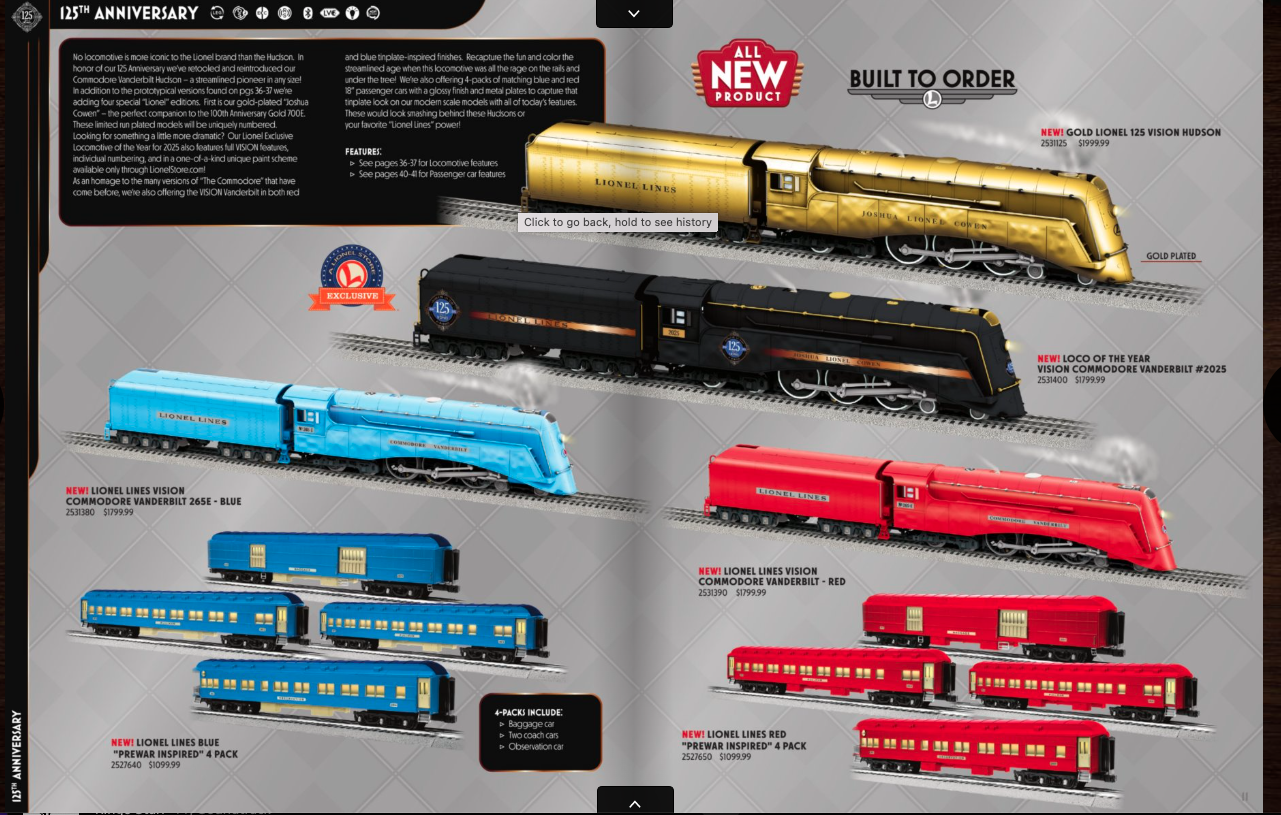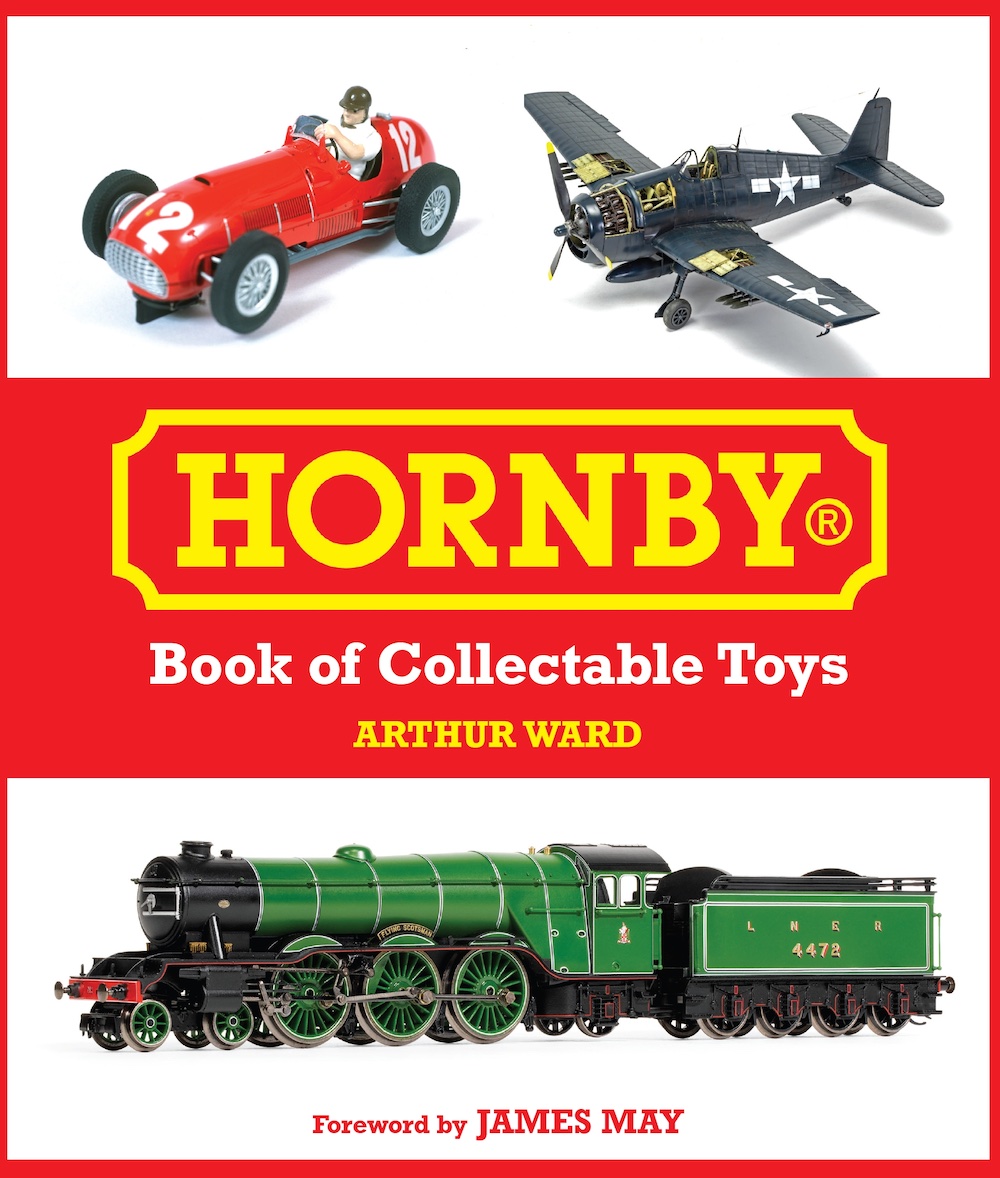Until recently, the major toy train manufacturers applied Canadian National and Canadian Pacific lettering to just a handful of premium diesels, and even fewer steam locomotives.
MTH is re-dressing this shortage with the U1f-class 4-8-2 Mountain locomotive. The Montreal Locomotive Works produced 20 of this class of locomotives (nos. 6060-6079) in 1944. These units, dubbed “Bullet-Nosed Betty” by employees and fans, were the last new steamers on the CN, and they were used for fast passenger service.
The engines featured 73-inch drivers and delivered more than 32,000 pounds of tractive effort – more than any of the railroad’s other 4-8-2s. The sleek engines were withdrawn from service between 1960 and 1962. According to the steamlocomotives.com website, three U1f-class steamers have survived. CN no. 6060 was returned to operational status in 2001 and will be used in excursion service by the Rocky Mountain Rail Society of Calgary, Alberta (see 6060.org for more information).
The model
The lines of the cab and boiler are rakish, suggesting a hot rod steamer ready to roll.
Befitting a locomotive that ran in the chilly Dominion of Canada, the Mountain has an all-weather cab. The side doors actually open, the roof hatches are hinged, and the windows, which slide open, have red frames. Two crew figures are in the cab.
Despite the rakish appearance, the locomotive is only semi-streamlined. Save for the bullet nose and some panels running along the side decks, it is a straight-forward steamer.
The business end of the engine showcases the headlight and illuminated number boards. Beneath the nose is a coupler and simulated uncoupler bar. The locomotive has an outside-bearing pilot truck.
Out front and center, an attractive gold and red Canadian National number plate is on a see-through grill that, on the prototype, covered the cooling radiator for brake system air. Marker lights bracket a bell that crowns the engine, and the whole thing is topped off with a capped stack.
The steps to reach the catwalks are a bit steeper than on most locomotives. The white handrails along the steps turn to black and run the length of the boiler.
The boiler casting is silky smooth, and I noted no flaws. There is ample cast-in detail for rivets, screws, and boiler bands. I found the platforms on either side of the combined steam and sand dome especially attractive.
There are many add-on details, such as piping and pop-off valves on the boiler. There are several round valve handles painted red, and near the cab are two wing-style valve handles also painted red.
The U1f has a six-axle Vanderbilt-style tender that is pleasantly different from the typical rectangular rig stacked high with black diamonds. This is an oil burner with not one, not two, but three fuel hatches. There are also three opening hatches for water.
There are black add-on handrails and grab irons along the top of the tender and two green add-on ladders. Out of the box the bottom of the forward ladder on our sample was slightly bent. The tender has an operating backup light and an electronic coupler.
Paint application is excellent. The boiler is black, the cab and tender are green, with gold, red and white trim.
My impression of CN green from color photos in books and magazines is slightly darker than the shade of the MTH locomotive. I checked the color samples in Arthur Dubin’s book Pullman Paint and Lettering Notebook (Kalmbach Books, 1997) and they suggest a darker green.
On the test track
The Mountain-type locomotive performed well and was trouble free.
With the ProtoSound 2.0 speed-control feature activated, our low-speed average was 3.95 scale mph and our high speed average was 97.7 scale mph. Running at 18 volts with a 25-car test mixed make and vintage freight in tow, I clocked the train at 46.2 scale mph. Drawbar pull for the 11-pound, 7-ounce locomotive is 1 pound, 10 ounces, or about 78 modern cars.
The ProtoSound 2.0 package delivers an excellent assortment of steam locomotive sounds. We’re eagerly awaiting MTH’s Digital Command System, but for now we were only able to test this locomotive in conventional mode. All conventional features including a passenger train announcement sequence performed as advertised.
The Canadian National Mountain-type has a one-of-a-kind appearance that will stand out in just about any locomotive fleet and it can deliver ultra-slow speeds as well as good full-tilt open-throttle toy train fun!














